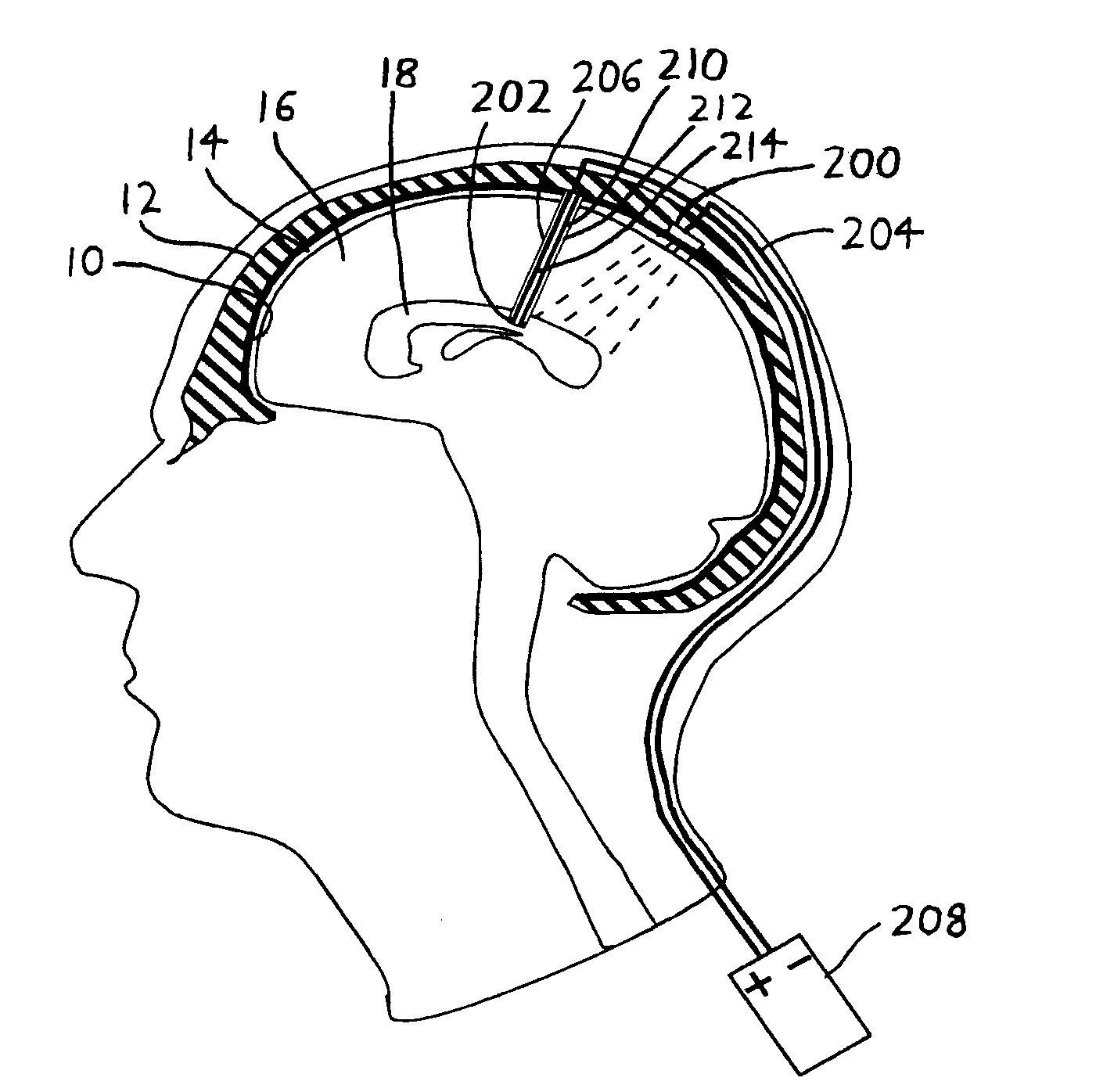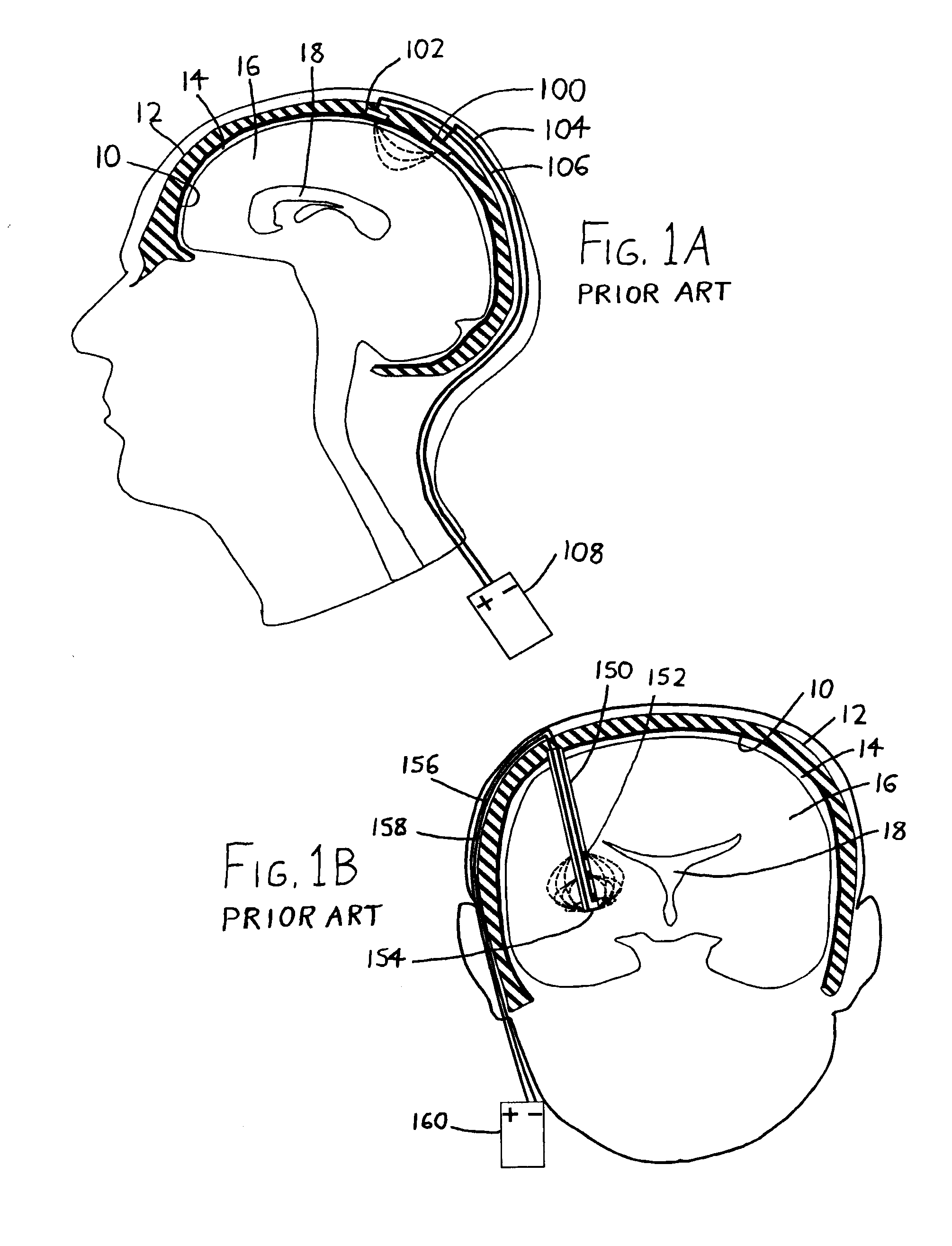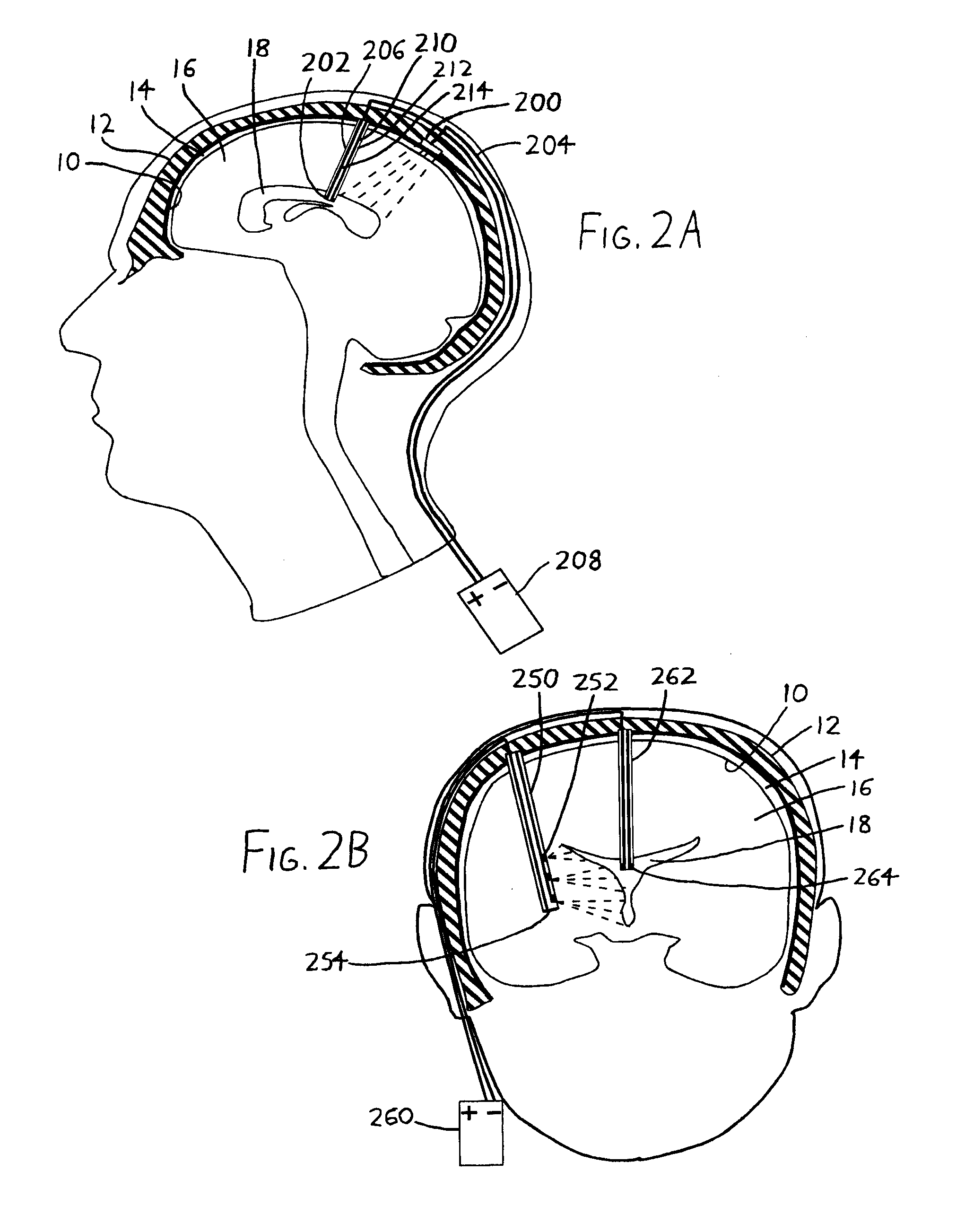Intraventricular electrodes for electrical stimulation of the brain
a technology of electrical stimulation and intraventricular electrodes, which is applied in the direction of internal electrodes, head electrodes, therapy, etc., can solve the problems of increased risks in the implementation of dbs, limited effectiveness of emcs, and inability to achieve the effect of reducing or eliminating side effects, causing intolerable tonic contraction of the patient's muscles, and reducing the effect of side effects
- Summary
- Abstract
- Description
- Claims
- Application Information
AI Technical Summary
Benefits of technology
Problems solved by technology
Method used
Image
Examples
Embodiment Construction
[0016]To elaborate on the discussion in the Summary above, the invention may be implemented instead of preexisting brain stimulation systems, or it may be implemented alongside them. As an example, in FIG. 2B, the ventricular current sink 264 might be used in addition to the current sink 254, rather than instead of it. In this case, the current sinks 254 and 264 might operate in tandem (e.g., with both being connected to the positive terminal of the power supply 260), or one might be operated differently than the other (e.g., they could be connected to separate terminals which operate them at different voltages, frequencies, etc. so that current flow between the current source 252 and the sink 254 differs from that between the source 252 and the sink 264). In similar respects, the arrangement of FIG. 2A might utilize an extradural current sink (as in FIG. 1A) in addition to the intraventricular current sink 202. It is also possible to provide the current source(s) and current sink(s...
PUM
 Login to View More
Login to View More Abstract
Description
Claims
Application Information
 Login to View More
Login to View More - R&D
- Intellectual Property
- Life Sciences
- Materials
- Tech Scout
- Unparalleled Data Quality
- Higher Quality Content
- 60% Fewer Hallucinations
Browse by: Latest US Patents, China's latest patents, Technical Efficacy Thesaurus, Application Domain, Technology Topic, Popular Technical Reports.
© 2025 PatSnap. All rights reserved.Legal|Privacy policy|Modern Slavery Act Transparency Statement|Sitemap|About US| Contact US: help@patsnap.com



